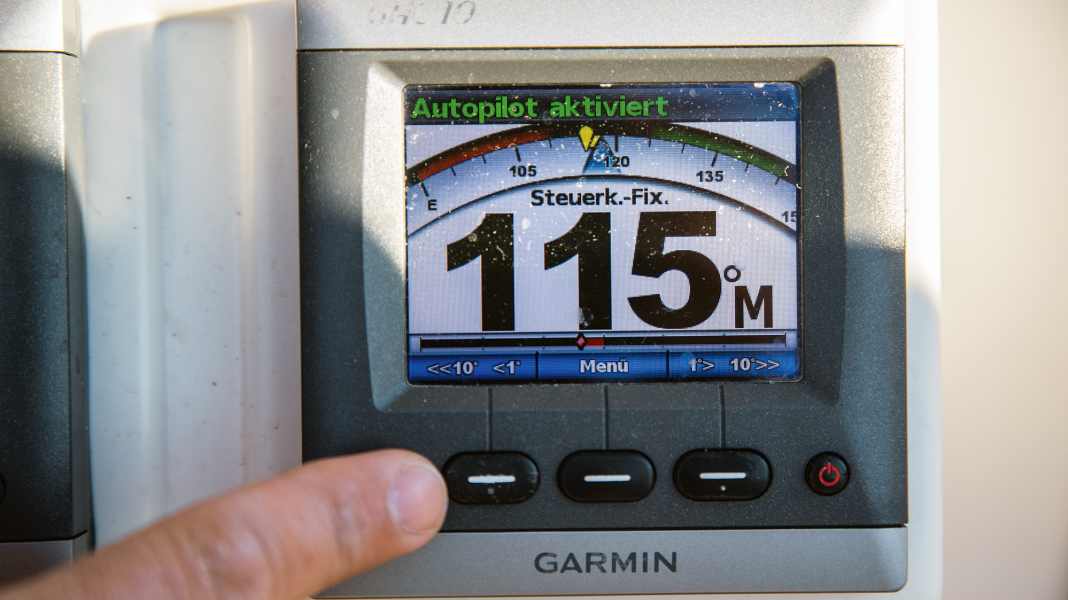
Today, electronic autopilots can do much more than their mechanical predecessors, the wind steering systems of yore. They are still particularly popular with blue water sailors. However, the current generation of steering aids is now standard on sailing yachts and comes in a wide variety of designs. For example, as an external tiller or wheel pilot or as a concealed built-in pilot for a wide variety of steering systems.
What happens when this complex technology or people fail when using it was recently the subject of several cases that were dealt with in a detailed report by the Federal Bureau of Maritime Casualty Investigation.
Also as a result of these investigations, the BSU published "Lessons Learned" on 5 December. The title is "Various accidents involving pleasure craft when using the autopilot". The lessons learnt result from the detailed investigations of all five accidents.
Full steam ahead into the pier
Case number one deals with the collision of an eleven-metre motor yacht, in which the skipper switched on the autopilot in Hamburg harbour to pick up an object from the ground. The autopilot could not be deactivated immediately, meaning that a collision with the quay wall could no longer be avoided. Two people were injured in the collision and there was considerable damage to the motor yacht.
Automated canalisation
In the second case, a 22 metre long sailing yacht collided with a 73 metre long research and survey vessel when the skipper went below deck after switching on the autopilot. His boat remained on course in a bend and collided with the research and survey vessel travelling in the middle of the Kiel Canal (NOK). The latter was hit on the starboard side aft, causing material damage to both vessels.
Involuntary change of course
In the third case, the boat hook attached to the backstay had come loose. The skipper of the ten-metre-long sailing boat switched on the autopilot to reattach it during the journey. When passing a moored barge with a length of 85 metres, the autopilot changed course by 90 degrees so that a collision with the ship, which was originally six to seven metres away, could no longer be avoided. Both vessels suffered minor material damage in the collision.
Canal trip, the second
During the passage through the NOK, a 16 metre long sailing yacht collided with a dolphin in the fourth case shown. The skipper had previously activated the autopilot in order to secure some lines beating in the wind on the foreship. As a result, the autopilot changed course to starboard so suddenly that a collision could no longer be avoided. This resulted in material damage to the sailing yacht.
Deadly patent neck
The last case presented involves the skipper of a 21-metre sailing yacht who was sailing in the Baltic Sea with a stern wind. Because he wanted to clean a cockpit windscreen, he switched on the autopilot. Shortly afterwards, he changed course, which resulted in a patent jibe. As the skipper was on his way back to the helm, he was hit by the mainsheet and thrown to the side. He suffered fatal injuries as a result.
The lessons for everyone
The BSU draws the following conclusions from the five accidents:
- Pleasure craft wishing to pass the NOK with only one person on board should plan for the possibility of short-notice stops when preparing their journey, as pleasure craft are not permitted to use their autopilot on the NOK
- Even when using an autopilot, a proper lookout must always be ensured in order to maintain situational awareness
- The more limited the water and the smaller the room for unintentional course deviations or errors by the autopilot, the quicker someone must be available to switch to manual steering and take over the task
- It must be technically possible to switch quickly to manual control at any time (even in the event of an autopilot system failure), and the procedures for doing so must be known to pilots
- Users of autopilots must know the technical limits of the system installed in each case, the characteristics of the connected/used sensors and the significance of the settings made on the autopilot (operating mode, control behaviour, etc.)
- Large steel/iron masses (other ships), live cables (submarine cables, overland lines over rivers and canals) and other external influences can significantly deflect magnetic and fluxgate compasses and thus, in conjunction with an autopilot, cause unwanted, sharp course changes
- The steering behaviour of the autopilot must be monitored for several minutes (also to ensure that the system is working at all) before consideration can be given to temporarily leaving the helm in open seas
- On vessels under sail, autopilots cannot guarantee that a course drop or similar will be avoided - even wind sensor control can reach its limits under certain conditions, e.g. with inappropriate sail handling
- On sailing yachts, autopilots should only be used with the utmost caution when sailing into a room wind and/or in stern seas, ideally only with additional protection from a bullstander
This might also interest you:

